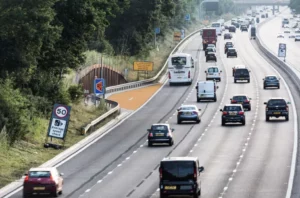The Department for Transport (DfT) has said that National Highways’ proposed upgrade of the A66 between Cumbria and North Yorkshire is “poor value for money”.
In the DfT’s latest business case assessment, the scheme has been given an adjusted benefit cost ratio (BCR) of 0.90. Anything below 1.0 is deemed to be “poor value for money”. The cost of the scheme has risen by £300m and is now estimated to come in at £1.3bn.
Despite this, the DfT has decided to continue with the project and is hopeful that “there are opportunities for cost reduction in the next stage of the project”. The DfT assessment adds that National Highways “is also working to capture all benefits as part of developing the full business case” and that there “are opportunities and efficiencies that could bring costs down, including value engineering”.
The report, authored by DfT principal accounting officer Bernadette Kelly, adds: “The latest cost increase presents affordability and value for money concerns, which [National Highways] and DfT will need to continue to work collaboratively to resolve, reports New Civil Engineer.
“Despite these concerns, there continues to be a strong strategic case for dualling on the A66. The A66:
- *provides key freight connectivity across the union and global markets
- *underwrites strategic, regional and national business connectivity
- *is essential for levelling-up and economic growth in the northern regions
- *provides access to major national tourism areas
- *is a critical link for the government’s energy security strategy.
“The project will also deliver on NH’s strategic priorities including improving journey times, route resilience and safety on the network.”
Due to a cost increase, the shortfall in allocated funding is expected in part to be met by “drawing on headroom elsewhere in the RIS2 portfolio”.
The scheme will see the remaining 29km of single carriageway sections of the road dualled and key junctions between M6 Junction 40 (Penrith) and the A1 at Scotch Corner improved.
It is susceptible to tailbacks when there is an accident due to a lack of diversion options and is also regarded as the most dangerous road in the country, with 50% more fatalities than any other route.
For these reasons, upgrading the road is classed as a nationally significant infrastructure project and has been selected as a pathfinding project for the government’s Project Speed programme in 2020.
This meant the construction time for the project would be halved and the opening of the road brought forward by five years, to 2029, said the New Civil Engineer report.
In October, a joint venture between Balfour Beatty, Costain, Keltbray and Kier officially signed a £1.3bn contract to upgrade the A66 known as the Northern Transpennine project.
The ORR assessment ruled that speeding up the construction of A66 upgrade was to blame for the cost increase.
However, the DfT’s latest assessment concludes that “the cost increase is a consequence of increased costs for development, land and construction (enabling works)”.
It adds: “This includes design evolution to take into consideration views from stakeholders and to address environmental concerns, which have informed a robust consentable development consent order (DCO) submission. The DCO has now been accepted for examination.
“There is also a significant increase in land costs due to design changes following statutory consultation and a revised land evaluation.”




























